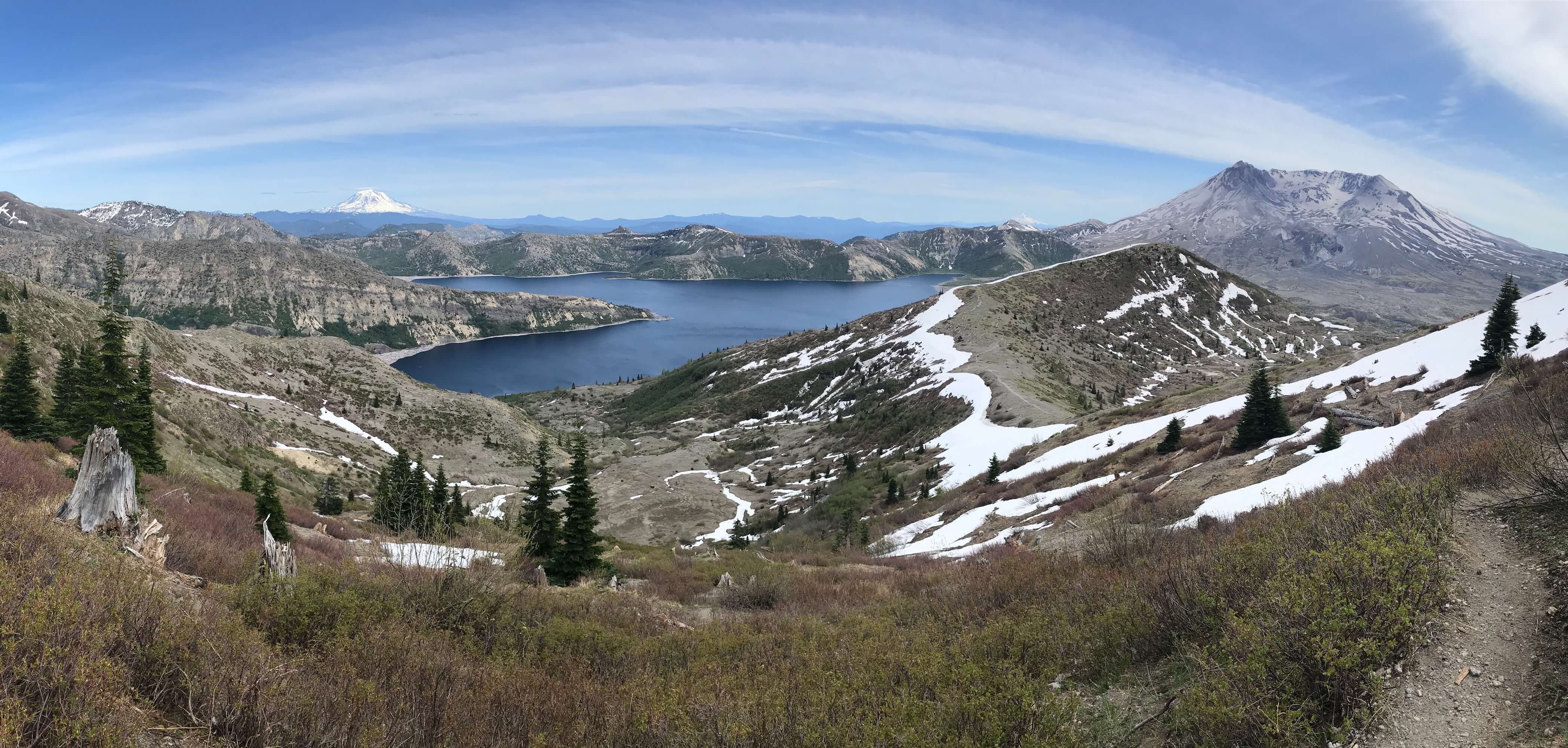Getting There
The hardest thing about hiking, especially in the winter months, is getting out of the house. I know I have about 3 weeks to try to squeeze in a few more hikes and up my stats. Like my previous hike reports, I got a later start so I had to pick somewhere close to home since it gets dark around 4:30p on the Oregon side of the Gorge.
I knew Ponytail Falls was short hike and while I like Oneonta Gorge, it doesn't offer views like some other Oregon Gorge hikes or most of them on the Washington side. I thought I would fit in TWO short hikes. I've been wanting to get back to Mitchell Point and the view point way above.
It was overcast but I saw it would only be partly cloudy in the late afternoon, slivers of blue sky and sunset colors. I only found a couple cars in the parking lot, and they weren't hiking per se.
The Hike
Length: 6.88 miElev. gain: 1,929 ft
Moving time: 3:16:17
Avg pace: 28:31
Calories: 1,729
Total time: 3:30:50
I geared up and set out on my hike. Not far up the trail, I saw some folks I'd seen leaving the parking lot making their way up the switchbacks. The trail looked familiar from my last visit with TKO to build the rock wall.
Not far after that I met a girl seemingly on her way down dressed in leisureware. She flagged me down and asked me to take a photo for her. As usual, I'll take a couple of shots: landscape, portrait, slight adjustments to composition, zoom level (0.5x, 1.0x). I pulled up the last shot on her phone and offered to take more if she wanted. She took me up on the offer and changed her pose. I noticed the lens on the back of the phone had a smudge. I fumbled for something to clean it with. She offered the sleeve of her sweater. It was vaguely intimate as I gently held her wrist while I clean the camera lens. She was appreciative and asked where I was going and how far the upper waterfall was. I assured her it wasn't very far up the trail, <0.5 mile. She seemed reinvigorated to turn around and make the ascent. I wished her well and took off at a quicker pace.
I zoomed up the trail and passed the group I'd seen earlier. I crossed behind Ponytail Falls and continued on the trail towards Oneonta. I saw that group across the way but not the girl. I hope she made it.
I followed the trail west towards Oneonta Gorge. There was a viewpoint but already two people enjoying the scenery. I skipped it and kept going. I'd seen the route and switchbacks way down below from the other side so I knew what to expect. Somewhere along the way I decided to only hike here and not try to hit Mitchell Viewpoint. I would hike up to where we had lunch with TKO.
And, that's what I did. I kept plodding forward. Noting trees that were down over the trail but not taking GPS coordinates or photos. I'm sure TKO will be back in Spring to deal with them like we did last late winter.
I only saw two other hikers at Triple Falls and beyond. I felt comfortable but knew I'd never reach any end of the road or view, I would just timebox my hike: Reach that upper bridge by 3pm or turn back.
I stopped at Triple Falls to take my requisite photos and inspect the work we did last winter with TKO. I remember when we finally kicked the huge root ball over the side or the tree dropped on the edge of the trail as a border/reinforcement for erosion.
The descent requires a lot of attention to foot placement as there are tons of rock, slippery surfaces, and sketchy steep cliffs. It is mentally taxing. I breathed a sigh of relief when I started down to the bridge back to the east side of the gorge and on my way back to Ponytail Falls and my car.
I stopped at the viewpoint I'd skipped on my ascent. The skies were colorful as it was almost sunset.
By the time I reached Ponytail Falls, it was getting pretty dark. I wasn't worried because I was just a 0.25 mile from the trailhead and I could finish the hike without digging out my flashlight. I took a few photos of the waterfall. The long exposure made for some cool, ethereal shots.
The hike was almost done. I'd seen a photographer perched on the cliff side before I got to Ponytail, waiting for the perfect lighting. On a longer section of the lower switchbacks, I saw a couple with a dog on a leash. I thought I saw some recognition as we got closer to each other. One of them sat down on rock or stump. When I got about 6 ft away, I said "Good evening". The person sitting down gasped and I'd clearly scared them. I apologized and said I'd thought they'd stop to rest and let me pass. But they hadn't actually seen me. Oops. I repeated my apology and bounced down the trail.
Sure enough, I saw their car and photographer's car in the lot. I changed my shoes and into dry clothes. Not super long hike compared to recent outing to Angel's & Devil's Rest and Dog Mountain. I was glad to get one more hike under my belt.
Next hike will be on my birthday. I hope I don't get too tired from two work parties at Beacon Rock.






























































